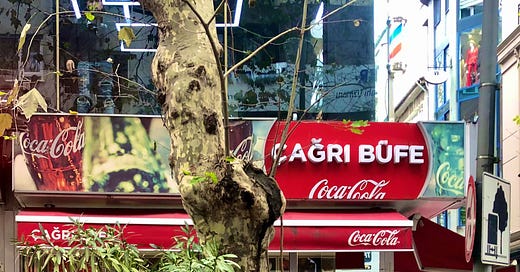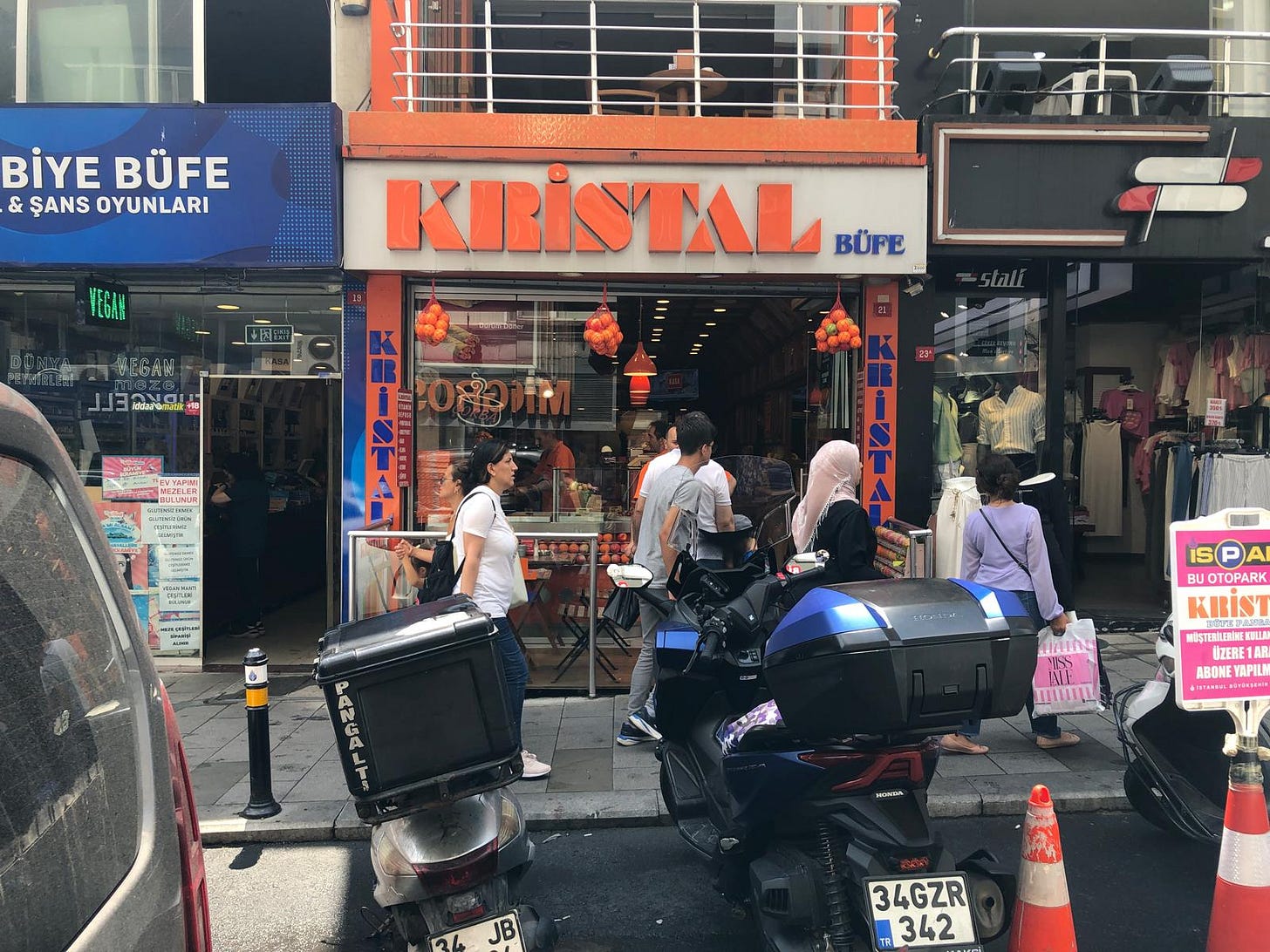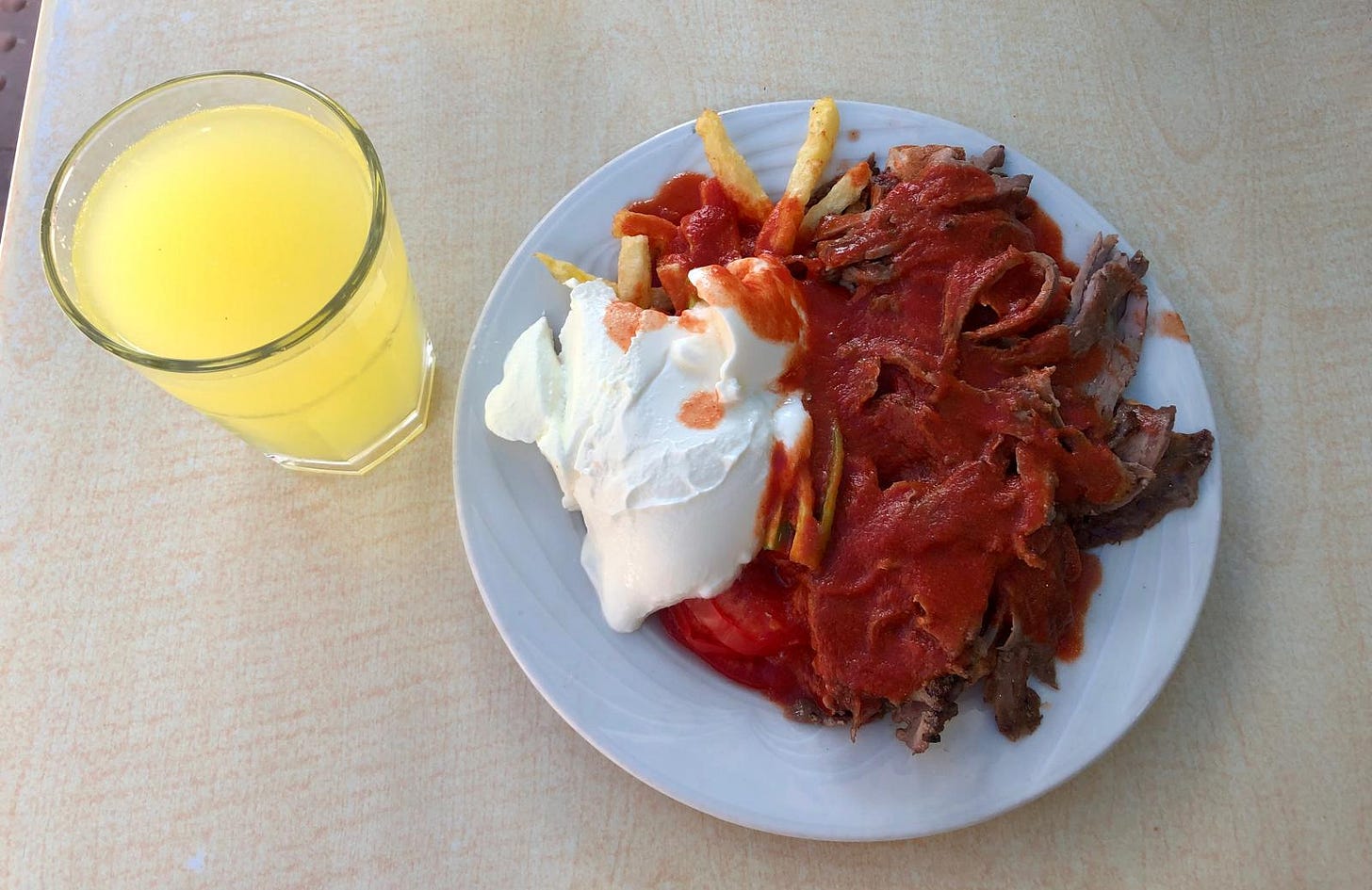The büfe: A cornerstone of Istanbul culinary culture
Restaurants selling döner, pressed sandwiches, fresh-squeezed juice and other snacks have been crucial in feeding The City for decades.
My favorite piece of writing by Orhan Pamuk is not one of his celebrated novels but a short essay he penned for The New Yorker in 2007 entitled “Forbidden Fare.” Pamuk describes his childhood in Istanbul in the 1960's coinciding with the rise of street food, a novel development resulting from both the recent arrival of technology such as the sandwich press as well as immigrants from Anatolia bringing their regional delicacies to sell on the streets of Turkey's biggest city.
Pamuk recalls secretly savoring a hot dog around Taksim Square only to be spotted by his older brother Şevket, who ratted on him to their mother. The boys were not allowed to eat such things, hence the title of the article. The widespread opinion at the time among the upper-middle class Istanbullites such as Pamuk's parents were that hot dogs and other street food like köfte ekmek, sucuk ekmek, and lahmacun were unsanitary and made with questionable meat. This did not sway the younger Pamuk.
The small restaurant that Pamuk sat at in the heart of Beyoğlu was one of many büfe restaurants that had begun to rapidly pop up in those years. Though in the United States and other countries, the term buffet refers to a restaurant or open table where diners are free to choose unlimited portions of a variety of dishes. The Oxford English dictionary lists this type as its first definition, but the second definition pertains to the Istanbul version: “A room or counter in a station, hotel, or other public building selling light meals or snacks.”
Büfes now exist all over Turkey, but they began in Istanbul with Kristal, which was either the restaurant Pamuk ate at, or one of its neighbors. Kristal Büfe was the first to bring the hamburger to Turkey in 1960 when in opened up in Taksim Square. Years later its building was demolished, as were many others in the area, but two other Kristals popped up in Şişli, namely the location on Ergenekon Avenue in Pangaltı, which opened in 1982 and has had the same elegant wood and mirror-paneled interior walls ever since, giving the restaurant a nostalgic aura.
“It’s never changed,” said 30 year-old Emre Kakşi, who has manned the cash register at Kristal for ten years, as long as I've been coming in. In legacy büfes like Kristal, what also doesn't often change is the staff. Kakşi is among the younger members of the crew: a colleague ten years or so his senior makes the burgers and pressed sandwiches, at the edge of the restaurant near the entrance, an elderly man with gray hair peaking from behind his boat-shaped chef's cap at the döner station has also been at his post for years.
“It’s good to continue working at the same place, if you are constantly changing jobs you can’t gain experience,” said Kakşi when we asked him why the crews at büfes like Kristal remain the same for so long. There's something comforting about seeing the same people every time you walk into a restaurant, at this point I've become friendly with Kakşi and we wave to each other on the street and chat when I come in for a snack.
Generally, there are two types of büfes in Istanbul: the first resembles Kristal, where a wide variety of sandwiches and burgers are served, and there is a juice bar that offers all sorts of combinations of fresh-squeezed fruits. Döner is usually available, though the chicken döner at Kristal is nothing to write home about. Their signature burgers are delicious (don't hesitate to ask them to add melted kaşar cheese ) however, and my personal favorite would be is a pressed sandwich with cheese, tomatoes, pickles and Amerikan salatası) alongside a glass of fresh-squeezed grapefruit and carrot juice.
At the other primary type of büfe, döner is the star of the show. It is often high-quality and runs out by the early evening. Some of these establishments will serve pressed sandwiches or hot dogs after the döner sells out.They always offer house-made ayran and lemonade, the most popular drinks in this type of büfe. Just a few minutes away from Kristal in Osmanbey is a shining example of this second type--Burç Büfe--which opened in 1983 and is known for slicing up some of the best döner in town.
“We’re happy with each other, that’s why,” said 75 year-old Berç Ergeçer when I asked why büfes retain the same crew for so long. Ergeçer sits behind the cash register, while next to him 50-year-old Enver Avşar rotates and cuts the hulking döner. I'm sweating in the stifling July heat just from walking around but there is not a bead of perspiration on Avşar's forehead despite the fact that he's been standing next to flames for hours. He says he's used to it after 38 years doing this kind of work.
“It’s because I’m making it, you see? I work really hard and I do it with love,” said Avşar when I asked him about the secret behind their döner, which they manage to keep reasonably-priced in spite of the rampant inflation that causes menu prices to change on what seems like a weekly basis. Büfes like Kristal tend to be more expansive, with ample seating spread across two floors, while places like Burç usually just have a handful of stools and small tables. The number of those coming in for a quick bite is equaled by those picking up takeout or ordering delivery. Avşar takes out his phone and shows a photo of him and Ergeçer from decades ago. When the latter retires, perhaps Avşar will leave his sweltering post and hop behind the register, but a döner master of his caliber will have to take his place.
It has been decades since Kristal served its groundbreaking burgers in Taksim Square, but today there is a row of büfes outside of which crowds form day and night. The original branch of Kızılkayalar is here, and they still make the city's best ıslak burger, sinfully garlicky and steamed to perfection. In recent years they have opened up a number of locations throughout the city, but their ıslak burger doesn't quite taste the same as it does in Taksim.
Korkmaz Büfe in Moda is my favorite döner spot in Istanbul. I'm not saying its the best, but it is my favorite. The same two middle-aged guys have been running it for years, and I've watched some of the younger employees grow into adulthood. A friend's studio where I record music at is in the basement floor of the same building, and I always make sure to be there in the early afternoon so I can have a sandwich before the döner runs out.
Goralı in Fatih's Fındıkzade is one of Turkey's trailblazers of fast-food. Their namesake sandwich has become a staple at büfes throughout the country, but it is mistakenly simplified as a hot dog sandwich with Amerikan salatası. One must visit this büfe to try the real thing, which is considerably more complex and unique. It is still run by the four Goralı brothers, whose father opened the restaurant in 1961, and it has stood in the same building, making the same sandwiches ever since.
As is the case with many usta and esnaf, Istanbul's most beloved büfes are generally run by older men, and the question is, who will replace them when they retire as most of the younger generations opt to pursue different lines of work? Will the numerous büfe chains that operate hundreds of locations swallow up the mom-and-pop shops? Only time will tell, so I try to stop by Kristal and Burç on a regular basis.
*This article was originally published by Apero, translated to Turkish by Reyhan Ülker









It was really fun to read this in Apero and now here. A great piece about such a foundational aspect of Istanbul food culture. So much more to dig into and explore!